文字サイズ
Tokushima Prefecture
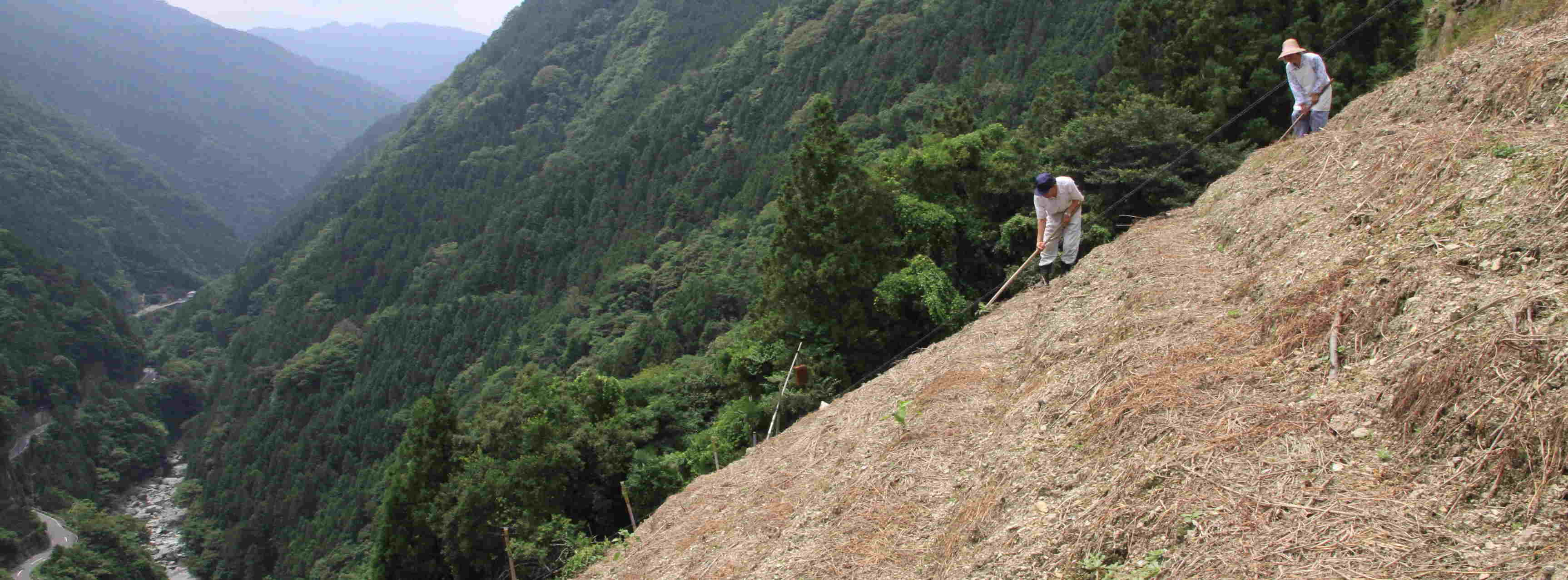
Nishi-Awa is the mountainous area located in the west of Tokushima in the center of Shikoku. In some places in Nishi-Awa, extremely steep slopes (up to 40 degrees) are used to cultivate a variety of crops such as buckwheat and tubers. Instead of converting into terraced fields, these slopes are used as they are by inserting Kaya (grass to lay) collected from grass land to prevent soil from sliding.
This agriculture system suitable for the environment in mountainous areas has been passed on through 400 years of generations, and the landscape of the mountainous villages, food culture and traditional events related to cultivation have been preserved by local people.
The “Steep Slope Land Agriculture System in Nishi-Awa” was designated as the first Japanese Important Agricultural Heritage System.
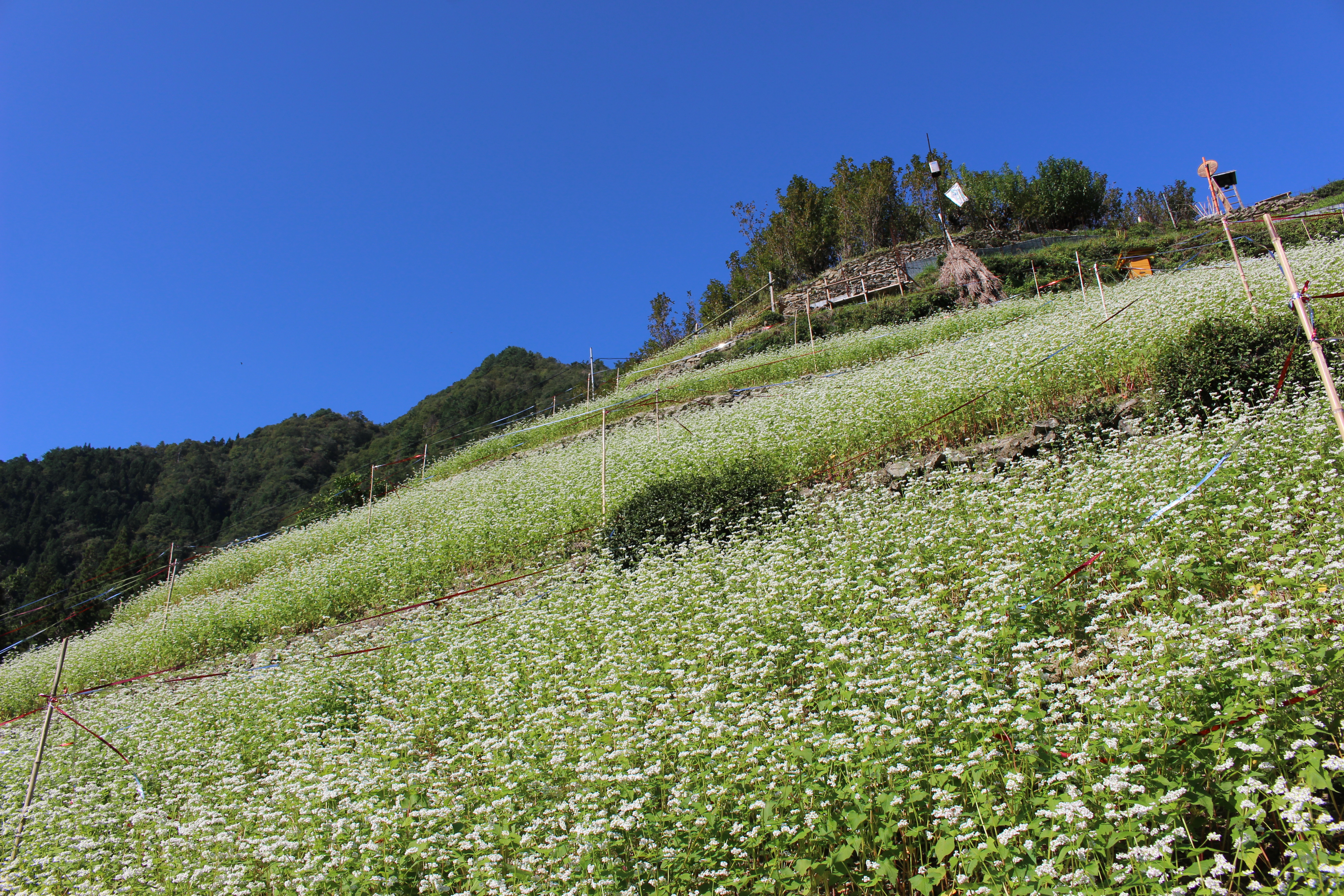
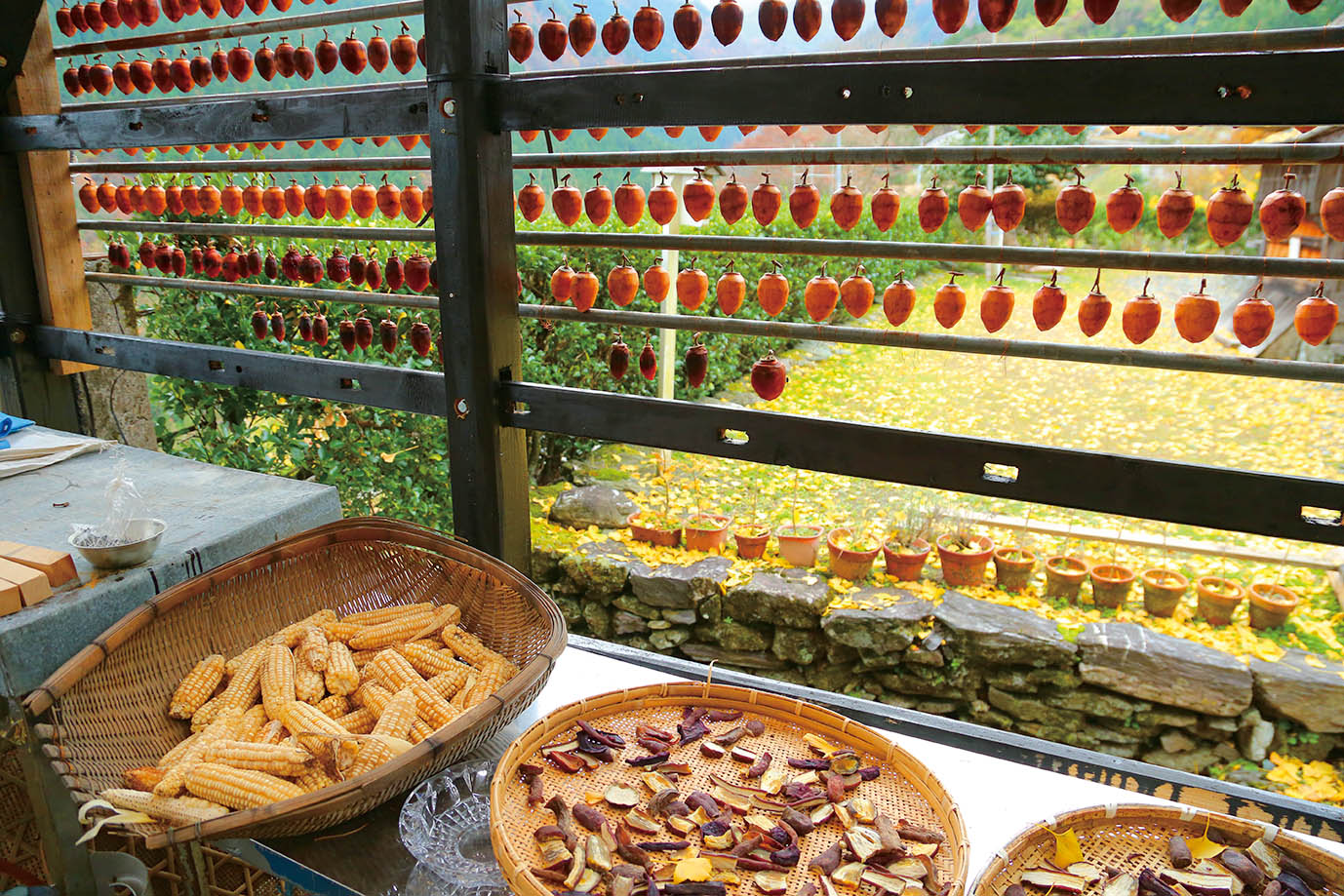
The steep slope land, which is normally thought to be difficult to inhabit, is utilized as farmland in its original form, and a variety of crops are cultivated there. Moreover, residences and water are secured to make life there comfortable.
One of three mysterious places in Japan, Iya, and the villages in the mountainous area are valuable resources as tourist attractions. The area promotes the interaction through hands-on experience of farming for oversea tourists and educational tourists, and attracts lots of people every year.
The grass land, where kaya (grass to lay) is collected, is regularly mowed so that enough sunlight is provided to the low height plants, and the favorable environment for a variety of plants is maintained. 282 species of plants including the rare Adonis shikokuensis have been confirmed. Moreover, the area’s biodiversity has been maintained with 241 insect species, 28 bird species, 9 mammal species, etc. There are also native varieties of grains (2 buckwheat species, 3 foxtail millet species, 6 sorghum species, 2 barnyard millet species, 19 proso millet species, etc.), and it proves that the land is a treasure of genetic resources of a variety of crops.
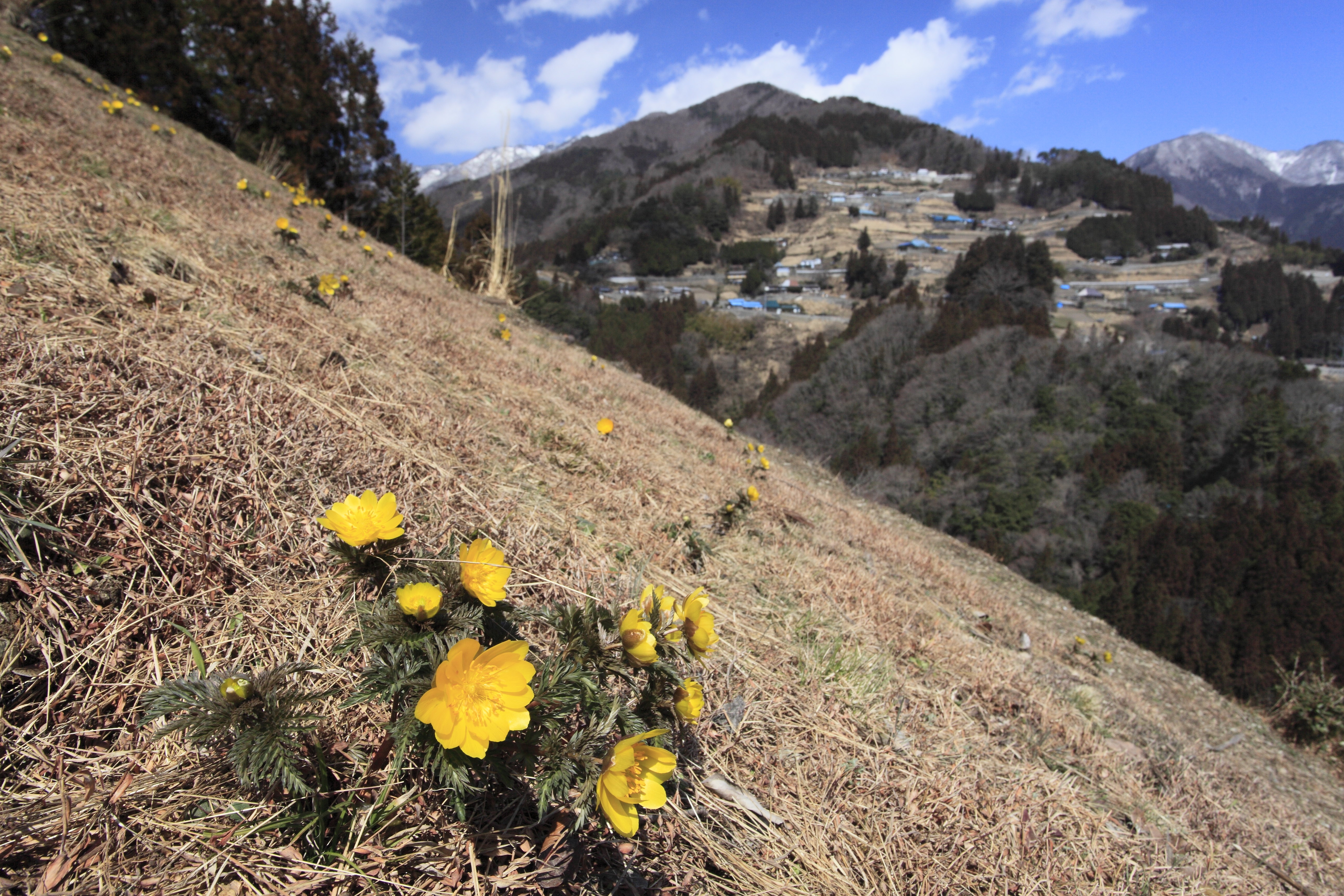
At the steep slope land, wind and rain lead to the soil being eroded and sliding. In order to prevent the soil sliding and to protect the soil, kaya, dried by koeguro (one of the ways of drying grass), is inserted in the field. The water storage and drainage are also adjusted by improving the ridges of the fields according to the contours. Furthermore, sarae / mutsugo (traditional farm tools) are used to raise and protect the soil. Plowing fields deeply helps to crush stones and make new soil. The ancestors’ wisdom and technology have made the farming in the steep slope lands sustainable.
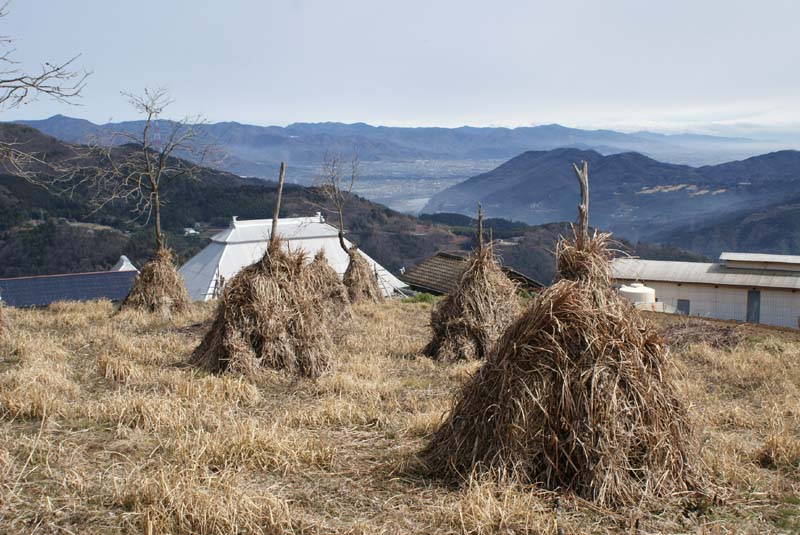
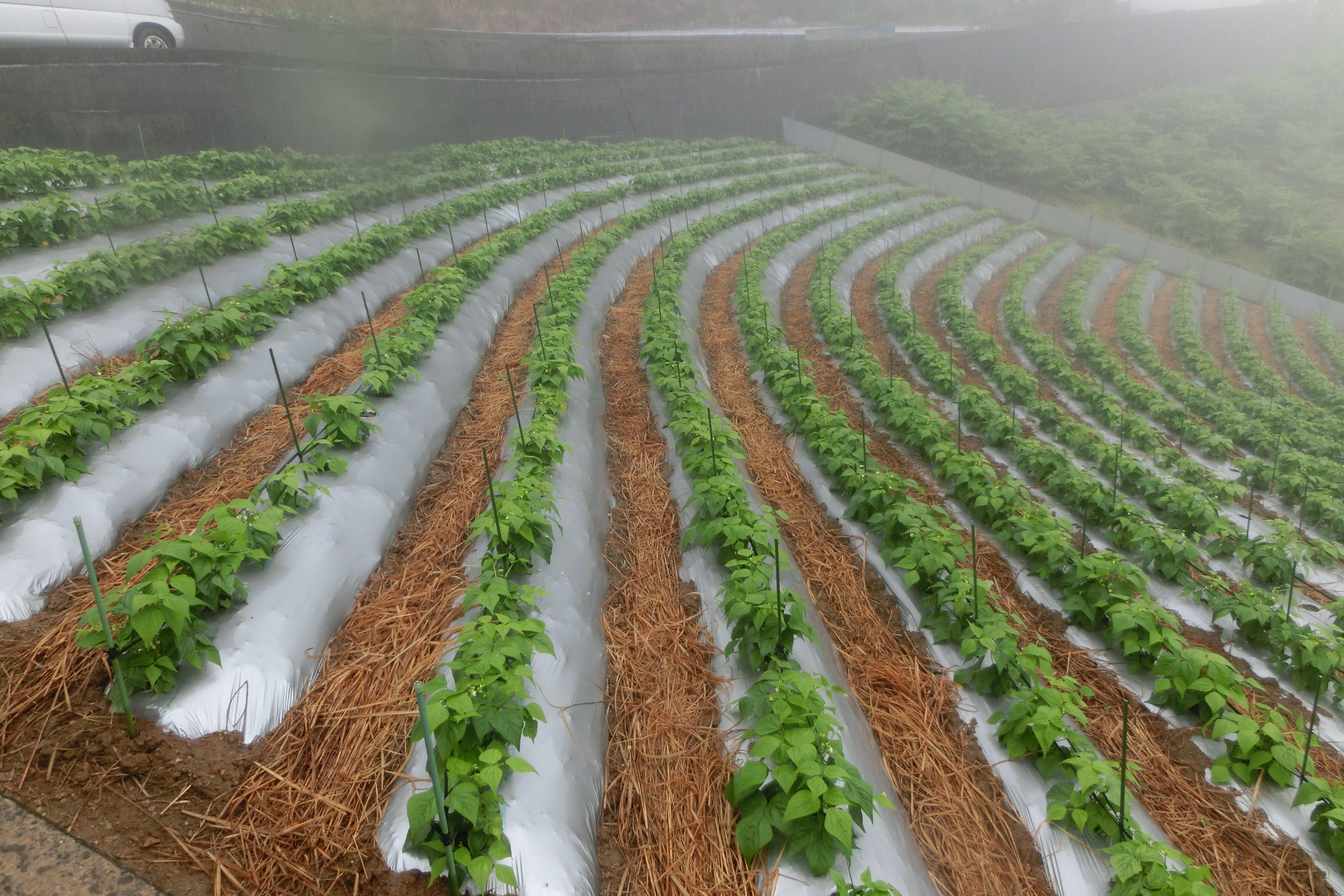
Many traditional agricultural festivals are held. Among them, Amagoi Odori (a ritual dance to wish rainfall), which is designated as National and Prefectural Important Intangible Folk Cultural Property and agricultural rituals still take place and are passed on through the generations by local communities and preservation societies.
There are also 425 temple buildings in the area so that exchanging information and mutual aid have been maintained.
The area is rich in traditional food culture using local food ingredients including grains, and unique local food such as Sobagome Zosui (buckwheat porridge) and Dekomawashi (grilled skewered buckwheat paste, konjak paste and tofu) are passed on through the generations.
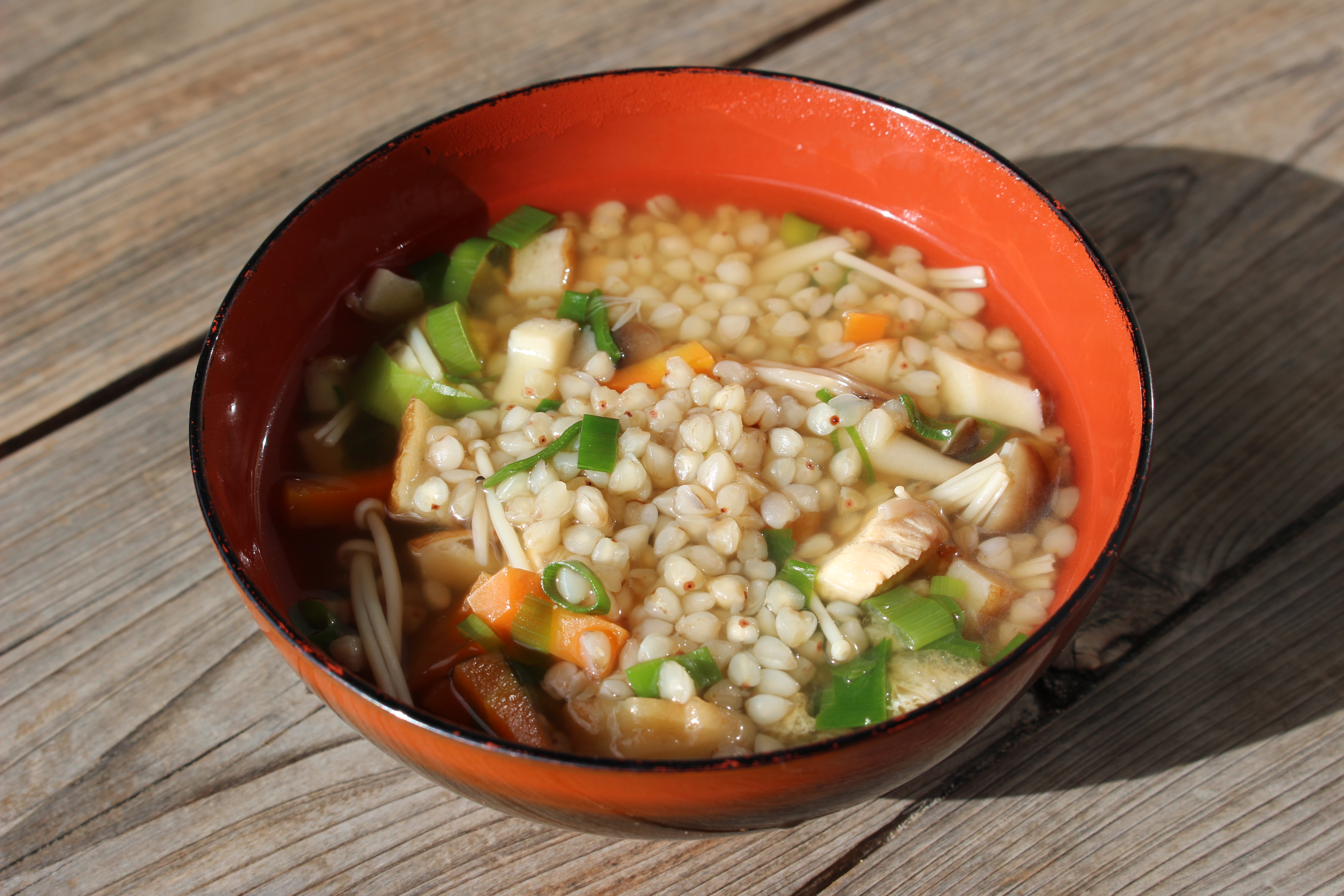
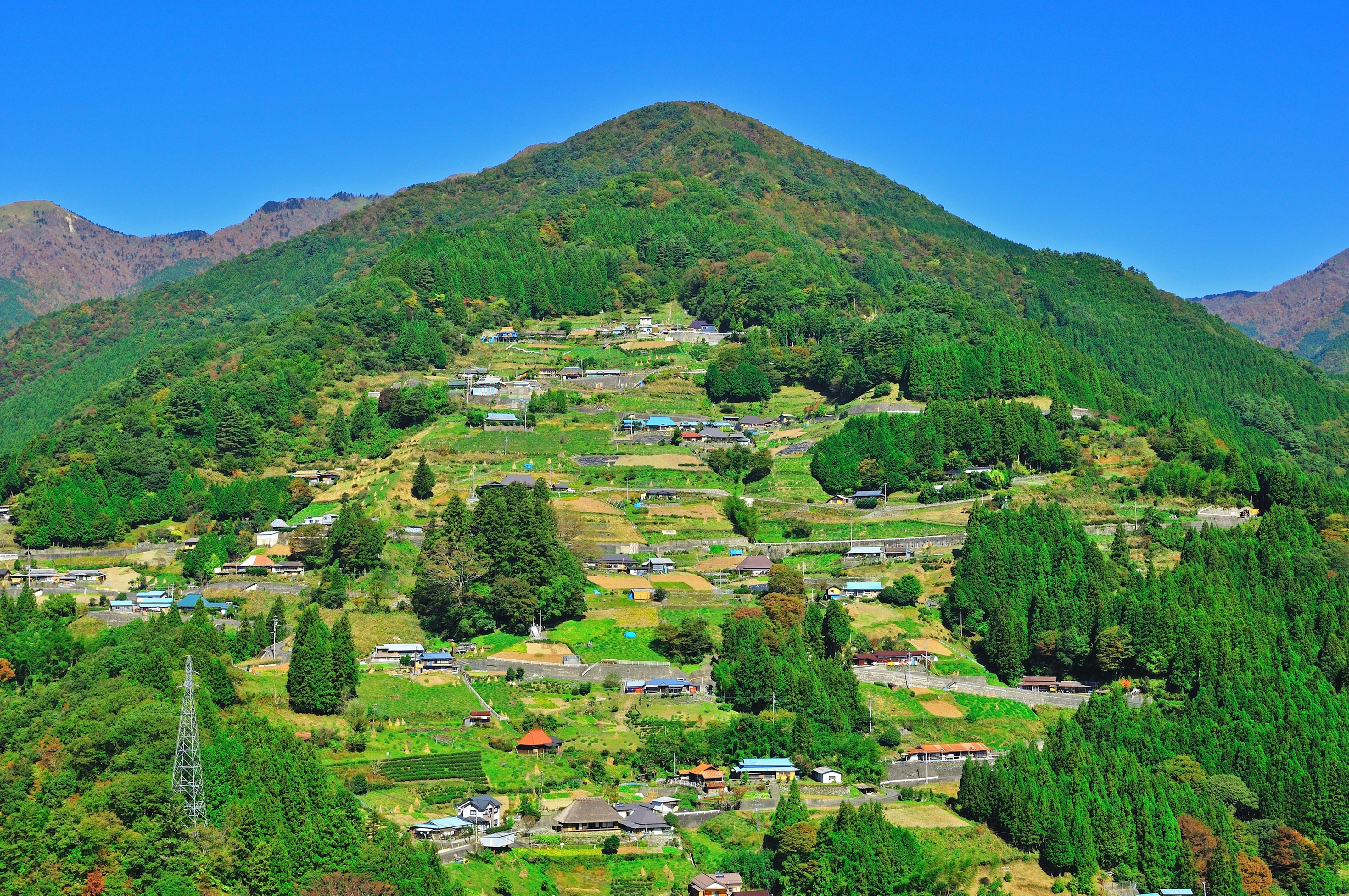
Ochiai Village in Iya, Miyoshi City was designated as Important Preservation District of Historic Buildings. The position of residential buildings, stone masonry, woods, fields and grassland facing towards valley creates a unique landscape. The area has recently been called Japan’s original scenery and many tourists from home and abroad visit Ochiai Village and Sarukai Village in Sadamitsu, Tsurugi-cho.
The woods surrounding the village have watershed protection function, and a geological structure called shattered zone. Both help to provide an abundance of water to the steep slope villages.
Copyright © Tokushima Prefecture, All rights reserved.